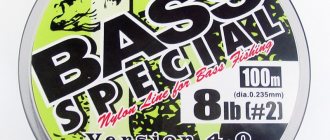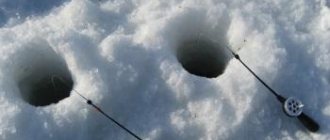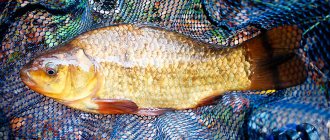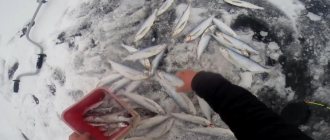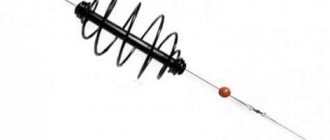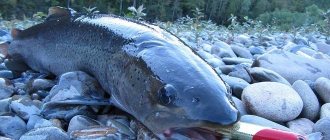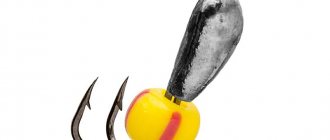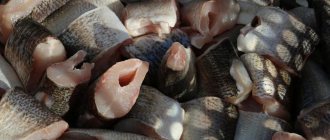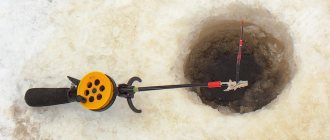Recipes for preparing winter bait for bream
The practice of catching white fish makes it possible to study the habits of representatives of the ichthyofauna, their tastes and preferences in a given season. Many years of fishing experience have allowed us to create several effective compounds that work in winter. You can prepare winter bait for white bream in different ways. Some fishermen use grain crops as a base, others are of the opinion that the best baits are store-bought mixtures with the addition of food bloodworms, attractants and pheromones.
Classic recipe
This composition has proven itself in large bodies of water, where bream are dispersed throughout the water area. The structure of the bait is balanced in such a way that only large fish remain on the feeding spot, and small fish in the form of small roach or ruff are cut off.
To prepare you will need:
- two glasses of millet;
- roasted sunflower seeds;
- fine grain oatmeal;
- three tablespoons of hemp grains;
- fried breadcrumbs.
First of all, cook millet for fishing. The porridge is brought to a boiled state, since its main task is to bind the other components together. Sunflower and hemp seeds should be roasted and crushed using a coffee grinder. Add a glass of oatmeal to the slightly warm mixture. At the bottom, small flakes increase the area of the “table” and attract bream from afar. Bream porridge is brought to a crumbly state using breadcrumbs.
Winter geyser
Another recipe for winter bait for bream is used by professionals in the wilderness. During this period, the fish is most passive due to the lack of oxygen dissolved in the water, so you should not overdo it with flavors.
Compound:
- any winter mixture;
- powdered milk;
- feed bloodworm;
- dark food coloring.
You need to mix the bait at home, because in the cold the moisture is absorbed and distributed much longer. On ice, add only a portion of food bloodworm. A handful of red larvae are placed separately in each feeder, without mixing them with the main mass. Winter bait for bream comes out dusty, whets the appetite and does not satiate the fish.
Universal bait
This winter bait for bream increases the number of bites both in still water and in the current. Thanks to the special composition, the fish quickly finds itself under the holes and remains at the point for a long time.
For the recipe you will need:
- a pack of half peas;
- corn chaff;
- breadcrumbs;
- ground black pepper.
Experienced fishermen prefer to use spices instead of liquid attractants. Spices give the maximum effect, but you need to calculate the proportions correctly.
Half-cooked peas need to be filled with water, brought to a boil and the moisture slowly evaporated until the porridge becomes homogeneous. After complete cooling, add the breaking component to the viscous mass.
Breadcrumbs together with corn chaff regulate the structure of the bait. To catch bream on the current in winter, the mixture should be thicker, and when fishing in still waters, it should be crumbly. Add black pepper at the last moment. The ready-made powder has a weaker aroma, so grind the peppercorns using a mortar. The smell of pepper should not completely overwhelm the aroma of pea porridge .
We recommend reading
Catching bream in winter with a combine and making fishing tackle. Combine tackle for winter fishing has a lot of positive characteristics over other fishing methods. She's great...
Composition for deaf winter
Closer to mid-January, bream are less likely to produce catches. During this period, look for it in holes with a slight current, where the oxygen level remains sufficient. The best search bait for winter fishing for bream is considered to be a mixture consisting of medium and fine fraction components with the addition of an animal component.
Recipe Ingredients:
- kilogram of wheat;
- 500 grams of millet;
- feed bloodworm;
- ground coriander.
First of all, steam the wheat. To do this, the grains are placed in a large container with a lid and poured with boiling water. Thanks to this method, the structure of the wheat remains intact. You need to take out the base of the bait at the moment when the grains begin to open. After complete cooling, incompletely cooked millet is added to the mixture. A small portion of coriander will “revive” the spice, but you can’t overdo it here. The light scent of spices goes well with live bloodworms added directly on the ice. This bait is used for fishing bream with a jig. Drop a small ball into each hole, which will attract the bream to the nozzle.
In the dead of winter it is easy to overfeed the fish, so add the mixture a little at a time.
Professional approach
The modern fishing industry is opening up new opportunities by bringing more new products to the market. Over the years, the composition of winter porridge for white bream has changed insignificantly, but today the addition of strange components can be seen in recipes.
Compound:
- kilogram of millet;
- rye bran;
- molasses;
- salt;
- maggot or bloodworm.
To prepare bait for winter fishing for bream, cook millet until crumbly and cool. After cooling, add rye bran soaked in molasses. The sweet smell and taste of corn syrup is one of the best attractants for catching any white fish. Using salt you can enhance the taste of the composition, but a little is required. Bloodworms and maggots are placed in the feeder before feeding.
We recommend reading
Catching bream with a devil in winter and choosing a jig One of the most interesting and unusual hobbies in winter is catching bream with a devil.
But not all fishermen...
Top 5 baits for winter fishing
Everything related to the five best recipes for winter fishing should not be considered as ideal ones that can ensure fishing results. Unfortunately, everything is not so simple and each recipe requires individual application, based on fishing conditions.
Ready-made factory baits should be divided into:
- Winter bait Sensas 3000 Ready Roach;
- Greenfishing (Winter);
- DINAMITE BAITS Ice Ground Bait;
- Mondial-f Wintermix Bream Black;
- Winter baits ka.
Adding animal components to complementary foods
In winter, it is much more difficult to interest fish. Bream, like other peaceful inhabitants of reservoirs, reacts well to moving larvae at the bottom. In addition to feed and bait bloodworms, maggots, chopped worms, pieces of tripe and amphipod beetles are also used.
A special place among the above is occupied by the burdock larva. On the worst days, when the fish refuses to come to the hook, the strong smell of a small larva saves the situation. This winter bream bait for ice fishing has a delicate structure, so change it after every fish you catch.
Burdock
Often chopped shellfish is also included in the composition. Pearl barley and toothless pearl barley are harvested in the fall and used as food familiar to bream.
Taste and color...
The color of the bait for ice fishing is not as important as for open water fishing. This is due to the fact that often almost no sunlight reaches the bottom, especially if you are fishing at a decent depth and there is snow on the ice.
But if the depth is less than 3-4 m, the water is clear and, even more so, if there is no snow on the ice, then in this case the color of the bait becomes important. The safest thing in this case is to use dark baits that do not stand out against the background of the bottom, otherwise the fish will simply be afraid to approach the light spot. I advise you to always have a jar of black dye in stock so that you can darken the bait if necessary.
However, there are exceptions to every rule. For example, in 2002, the Finnish team won the World Cup in Latvia using red bait (photo 2). And I want to say that our experiments with red baits during ice fishing also sometimes gave good results.
Photo 2.
As for the smell of bait, everything is not so clear. There is a common belief that winter bait should have a mild smell, and supposedly for this, branded baits need to be diluted with breadcrumbs. If necessary? This is almost never practiced in our team. But you definitely shouldn’t additionally flavor branded bait for ice fishing, just as you shouldn’t use bait with too strong a smell. By the way, overly aromatized bait can scare away fish in the summer, so there is no need to look for a connection between the degree of aromatization and water temperature. I have witnessed how a point was fed with a very odorous mixture, and as a result the bite was completely cut off - the fish began to take only away from the feeding spot.
And although you can give a lot of examples when the powerful smell of bait did not bother fish in cold water, it’s better, of course, not to risk it.
And one moment. One of the Western European fishermen once expressed the idea that bait for cold water should be salty. But this statement is highly controversial. The fact is that salt instantly kills the feed bloodworms added to the bait. Well, dead bloodworms are often of no interest to fish (except for selective fishing for large fish). After all, fish are suitable for bait with bloodworms primarily because they hear the vibrations created by the larvae in the water. Apparently, the whole point is that salt is the cheapest preservative, so some manufacturers (especially Belgian ones) often add it to the vegetable mixture.
This will probably seem strange to some, but if I am going to use bait that is unknown to me, I will definitely taste it a little before moistening it. In any case, no matter what the bait is, it is better to add bloodworms only at the very last stage, before feeding. After lying even in ordinary breadcrumbs, bloodworms become lethargic after an hour.
Herbal supplements
The use of plant components as a separate additive occurs in cases where wheat, semolina, dough or pearl barley are placed on the hook. Changing the fraction has a positive effect on the retention of large fish. A small roach with its appearance attracts bream to the “table”, but cannot swallow large particles of food.
Popular Supplements:
- dry rice;
- cereals;
- small pasta;
- wheat and pearl barley.
The amount of plant elements should not exceed 10% of the total mass of the bait. Otherwise, the fish will lose interest in the bait, combing the bottom in search of large particles.
Feeding methods
In many ways, different methods of feed delivery help to carry out complementary feeding correctly. Here are several popular options.
- The easiest way is to lower the mixture into the hole without additional equipment. This option is suitable for fishing at a depth of up to 1.5 m when catching surface fish. Sometimes anglers use this feeding technique to lift fish from the bottom into the middle and upper layers.
Photo 2. Feeding the hole from above.
This is interesting! If you throw a live bloodworm into the hole, the perches begin to grab the larvae as they fall. Sometimes it is possible to catch striped predators right under the ice.
- A popular device for delivering a portion of feed to the bottom is a dump feeder. It is made in the form of a cone, in which there are small holes. The bottom is fixed with a wire stopper. To open the feeder, you just need to sharply pull the fishing line up. Dump trucks are made of steel sheet or plastic.
Photo 3. Dump feeder. - A stationary feeder works well in river conditions. It descends into the next hole, which is located upstream. Typically, mesh structures are used, from which particles that are attractive to fish are gradually washed out.
Special additives and flavors
Fishermen are advised to improve their own baits by changing their recipe. In addition to molasses, garlic is considered one of the favorite bream smells. A crushed clove of garlic not only enhances the aroma of the bait mixture, but also increases the appetite of underwater inhabitants.
At the beginning of winter, an additive such as boiled potatoes, cut into small cubes, also shows itself. Some fishermen get sophisticated by mixing potatoes with spices and then the resulting mass is sent into the hole. Bait for bream in winter requires imagination and knowledge about the preferences of prey.
An effervescent tablet works well when fishing for bream in winter. A tablet placed in a bait ball gradually destroys it, spreading food particles throughout the fishing area. The “live” mixture attracts bream much faster.
Is bait necessary for a predator?
Winter bait can also improve the predator’s bite. There are two options to consider here.
- The direct effect of bait is manifested when fishing for such types of fish as perch and rotan. Since these representatives of the ichthyofauna are indifferent to plant foods, the basis of bait should be animal components. Most often, this role is played by feed (small) bloodworms. It is thrown in pinches into the hole or lowered to the bottom using a feeder. It all depends on the horizon in which the fish hunts. In some regions, various crustaceans are used. Since ancient times, perch have been attracted to the hole with the help of fresh animal blood. Burbot is also fed during night fishing with the help of various animal components. These can be pieces of fish meat, chicken liver, chopped worms, etc. The mustachioed predator navigates in the dark thanks to its excellent sense of smell, gathering at a feeding point.
- The indirect influence of bait can also manifest itself when hunting for pike and pike perch. It is enough to attract a large amount of small things under the hole so that the predator becomes interested in this water area. Therefore, some anglers combine fishing for whitefish with a jig and fishing for predators with live bait.
Universal recipes
Recipe No. 1
Bread crumbs make the bait more viscous.
Good for fishing for carp fish.
Ingredients:
- about 1 kilogram of breaded crackers;
- fried seeds, crushed in a meat grinder;
- 200 grams of yellow peas;
- 150-200 grams of oatmeal.
Step-by-step instruction:
- pour boiled water over the peas;
- cook it until it resembles a puree;
- mince fried seeds and oatmeal;
- mix the resulting mass with breadcrumbs;
- near the pond add: a worm, daphnia or finely chopped shrimp.
Recipe No. 2
Ingredients:
- breadcrumbs;
- peas;
- cake;
- oatmeal or millet groats.
Everything needs to be boiled to a mass similar to puree, and then smear the mixture over the feeder on the pond.
Recipe No. 3
Ingredients:
- half a kilo of breaded crackers;
- a spoonful of sunflower oil;
- maggots.
This mixture is suitable as a survey for the presence of fish in a reservoir.
Recipe No. 4
Bream and other carp really like chocolate.
Considered the most difficult.
Ingredients:
- 300 grams of millet;
- 300 grams of bloodworms;
- cocoa;
- orange zest;
- 50 grams of grated chocolate;
- strawberries if desired.
Step-by-step instruction:
- The cereals need to be boiled into porridge, and the rest of the mixture should be mixed into a homogeneous mass.
- It is allowed to add chopped worms to the bait balls.
- At the pond, mix the mixture with soil and lower it into the holes.
Recipe No. 5
Step-by-step instruction:
- cook millet;
- fry breadcrumbs in vegetable oil;
- mix the fried seeds with millet porridge and breadcrumbs;
- add a little bloodworm to the resulting mass;
- Find soil on the pond and mix it with the resulting bait.
Choosing a place for winter feeding
Bream and its fishing often require not one-time feeding , but long-term feeding for four to five days, at a minimum, and preferably more. And here the choice of place for complementary feeding is very important. As a rule, the iconic place is the traditional edge, separating a deep hole and a relatively shallow plateau. The depth difference can be 6-10 meters. Often it is on this border that a school of bream stays, and large roach stand nearby.
But depth is not the determining factor for success in fishing. We need to find the upper level of the edge, the so-called residential or habitable horizon.
As a rule, in the pit itself, on the bare cold bottom, few fish stay. All the inhabitants of the underwater feast, especially the bream, strive for the upper edge of the edge, onto the slope into the hole. And such a residential floor is determined, in addition to the echo sounder, by the presence of vegetation, as well as colonies of mollusks, which large fish like to feed on. These are mussels, toothless mussels, pearl barley. It is in such places that fish need to be hooked. Initial reconnaissance, as already mentioned, can be done using an echo sounder, which will show the drop into the pit, the very cornice where the fish are kept. And then you can make a more detailed analysis of the place, as they say, through trial and error, lowering a weight or a heavy jig, catching the bottom.
The found point is “hammered” into the navigator for fishing, in addition, several holes for complementary feeding are marked with poles. Usually several holes are prepared for fishing. It's more reliable.
Winter bait is poured onto the bottom using a cone-shaped metal feeder called a “dump truck” . It sinks to the bottom or hangs near the bottom. Then the pin is pulled out with a jerk, and the bait remains at the bottom. They are usually applied twice a day , morning and evening, preferably at the same time. At the very least, in the morning it is necessary to accustom the fish to receive food without fail.
